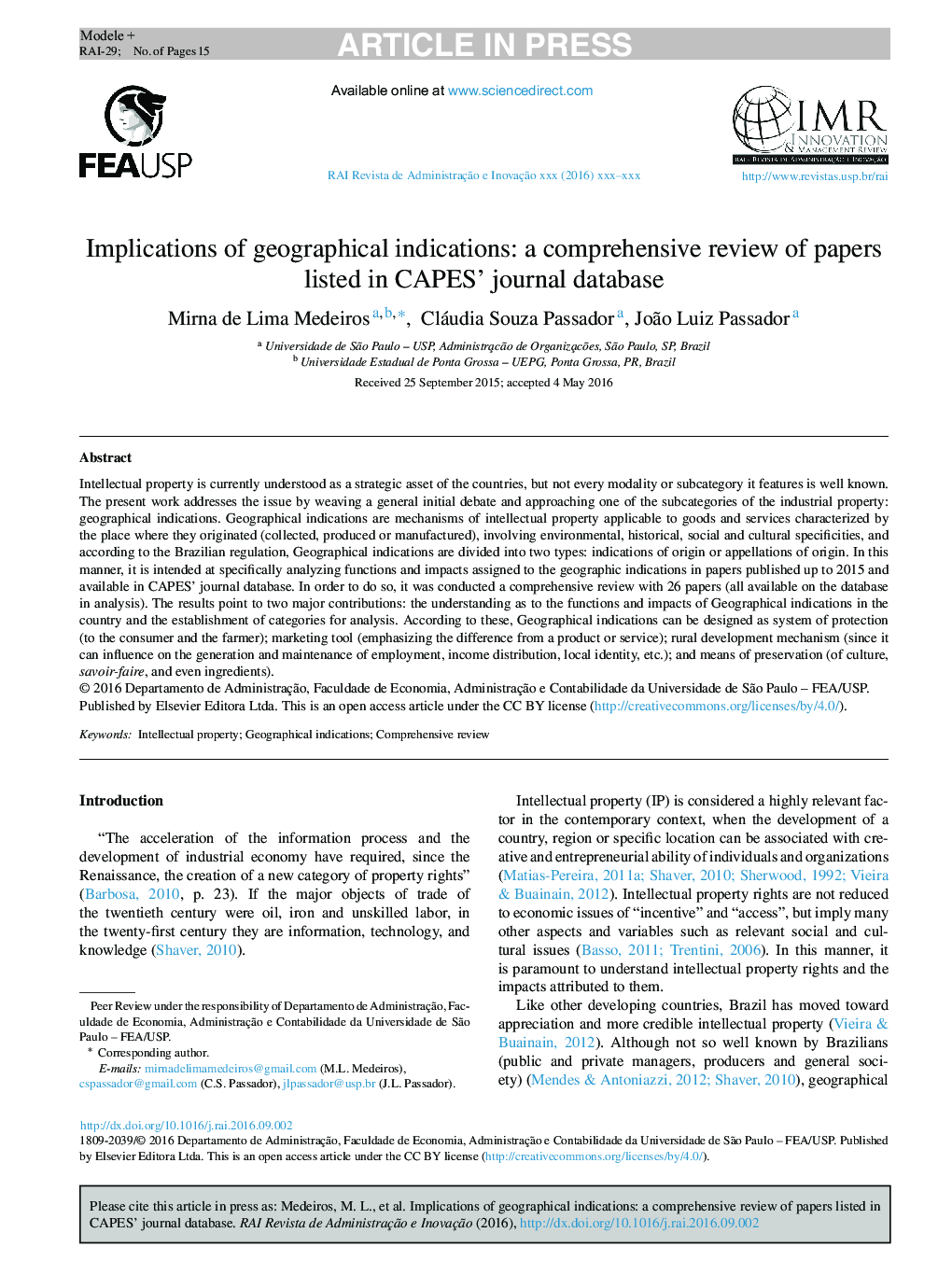| Article ID | Journal | Published Year | Pages | File Type |
|---|---|---|---|---|
| 7429720 | RAI Revista de Administração e Inovação | 2016 | 15 Pages |
Abstract
Intellectual property is currently understood as a strategic asset of the countries, but not every modality or subcategory it features is well known. The present work addresses the issue by weaving a general initial debate and approaching one of the subcategories of the industrial property: geographical indications. Geographical indications are mechanisms of intellectual property applicable to goods and services characterized by the place where they originated (collected, produced or manufactured), involving environmental, historical, social and cultural specificities, and according to the Brazilian regulation, Geographical indications are divided into two types: indications of origin or appellations of origin. In this manner, it is intended at specifically analyzing functions and impacts assigned to the geographic indications in papers published up to 2015 and available in CAPES' journal database. In order to do so, it was conducted a comprehensive review with 26 papers (all available on the database in analysis). The results point to two major contributions: the understanding as to the functions and impacts of Geographical indications in the country and the establishment of categories for analysis. According to these, Geographical indications can be designed as system of protection (to the consumer and the farmer); marketing tool (emphasizing the difference from a product or service); rural development mechanism (since it can influence on the generation and maintenance of employment, income distribution, local identity, etc.); and means of preservation (of culture, savoir-faire, and even ingredients).
Related Topics
Social Sciences and Humanities
Business, Management and Accounting
Management of Technology and Innovation
Authors
Mirna de Lima Medeiros, Cláudia Souza Passador, João Luiz Passador,
